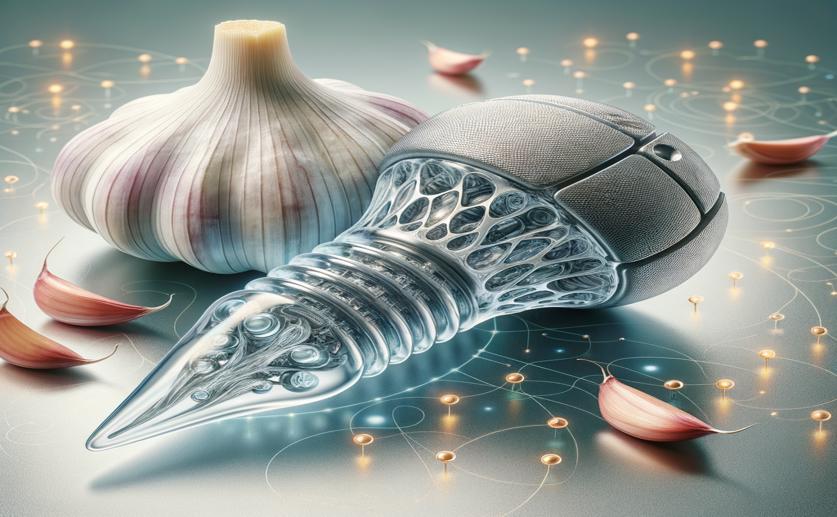
Bioactive Implant with Garlic Enhances Healing and Fights Infection
Jenn Hoskins
7th April, 2024

Image Source: Natural Science News, 2024
Key Findings
- In Tehran, a study improved titanium bone implants by adding garlic extract to fight infection
- Garlic-loaded nanotubes on the implant surface reduced bacteria and supported bone cell health
- The right amount of garlic extract enhances cell viability, crucial for implant-bone integration
References
Main Study
1) Evaluation of bioactivity and antibacterial properties of Ti6Al4V-based green biocomposite implant encompassing TiO2 nanotube arrays and garlic extract.
Published 15th April, 2024 (future Journal edition)
https://doi.org/10.1016/j.heliyon.2024.e28588
Related Studies
2) Titanium dioxide nanotubes as drug carriers for infection control and osteogenesis of bone implants.
3) Promoting Osseointegration of Ti Implants through Micro/Nanoscaled Hierarchical Ti Phosphate/Ti Oxide Hybrid Coating.
4) Smart piezoelectric biomaterials for tissue engineering and regenerative medicine: a review.



 31st March, 2024 | Jim Crocker
31st March, 2024 | Jim Crocker